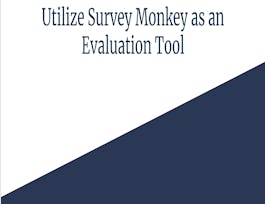Good data collection is built on good samples. But the samples can be chosen in many ways. Samples can be haphazard or convenient selections of persons, or records, or networks, or other units, but one questions the quality of such samples, especially what these selection methods mean for drawing good conclusions about a population after data collection and analysis is done. Samples can be more carefully selected based on a researcher’s judgment, but one then questions whether that judgment can be biased by personal factors. Samples can also be draw in statistically rigorous and careful ways, using random selection and control methods to provide sound representation and cost control. It is these last kinds of samples that will be discussed in this course. We will examine simple random sampling that can be used for sampling persons or records, cluster sampling that can be used to sample groups of persons or records or networks, stratification which can be applied to simple random and cluster samples, systematic selection, and stratified multistage samples. The course concludes with a brief overview of how to estimate and summarize the uncertainty of randomized sampling.



Sampling People, Networks and Records
This course is part of Survey Data Collection and Analytics Specialization

Instructor: James M Lepkowski
Sponsored by Coursera Learning Team
11,791 already enrolled
(103 reviews)
What you'll learn
Understand the value and risks sampling and randomization methods bring to scientific investigation
Differentiate different types of sampling methods and their applications
Explain the principles and techniques of probability sampling methods
Skills you'll gain
Details to know

Add to your LinkedIn profile
4 assignments
See how employees at top companies are mastering in-demand skills

Build your subject-matter expertise
- Learn new concepts from industry experts
- Gain a foundational understanding of a subject or tool
- Develop job-relevant skills with hands-on projects
- Earn a shareable career certificate


Earn a career certificate
Add this credential to your LinkedIn profile, resume, or CV
Share it on social media and in your performance review

There are 6 modules in this course
What's included
10 videos10 readings
What's included
7 videos7 readings1 assignment1 peer review
What's included
10 videos6 readings1 assignment1 peer review
What's included
6 videos6 readings1 assignment
What's included
5 videos4 readings1 peer review
What's included
6 videos9 readings1 assignment
Instructor

Offered by
Why people choose Coursera for their career




Learner reviews
103 reviews
- 5 stars
67.96%
- 4 stars
17.47%
- 3 stars
2.91%
- 2 stars
2.91%
- 1 star
8.73%
Showing 3 of 103
Reviewed on Jun 12, 2020
I was very impressed with the course content as well as the expert presentation. This course has empowered with relevant and practical sampling skills that I will apply in the my work
Reviewed on May 27, 2017
the most comprehensive course about sampling undoubtedly. Try to take quizzes as well in order to get the most of the course and materials.
Reviewed on Nov 11, 2017
Excellent tutor. Easy to follow and useful coursework. Thanks!
Recommended if you're interested in Health

Coursera Project Network

Alberta Machine Intelligence Institute

University of California San Diego

University of Western Australia

Open new doors with Coursera Plus
Unlimited access to 10,000+ world-class courses, hands-on projects, and job-ready certificate programs - all included in your subscription
Advance your career with an online degree
Earn a degree from world-class universities - 100% online
Join over 3,400 global companies that choose Coursera for Business
Upskill your employees to excel in the digital economy


